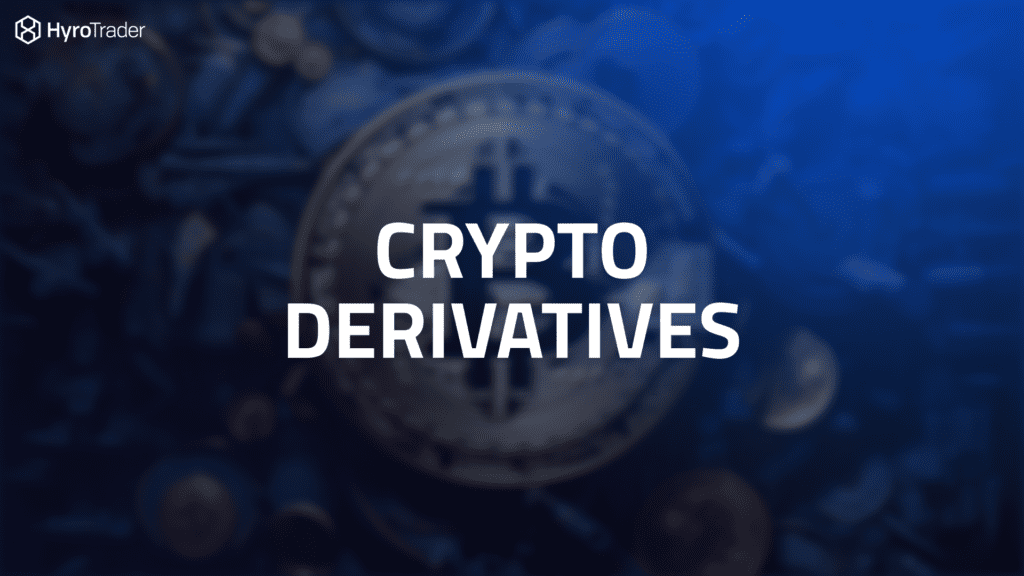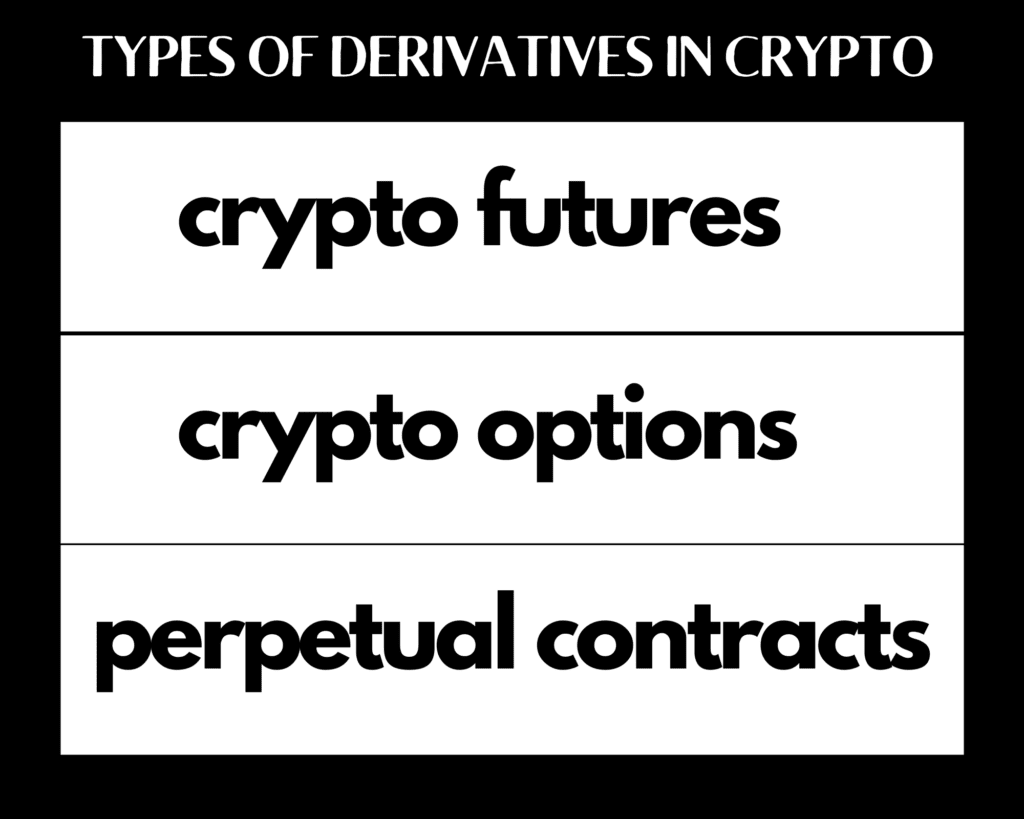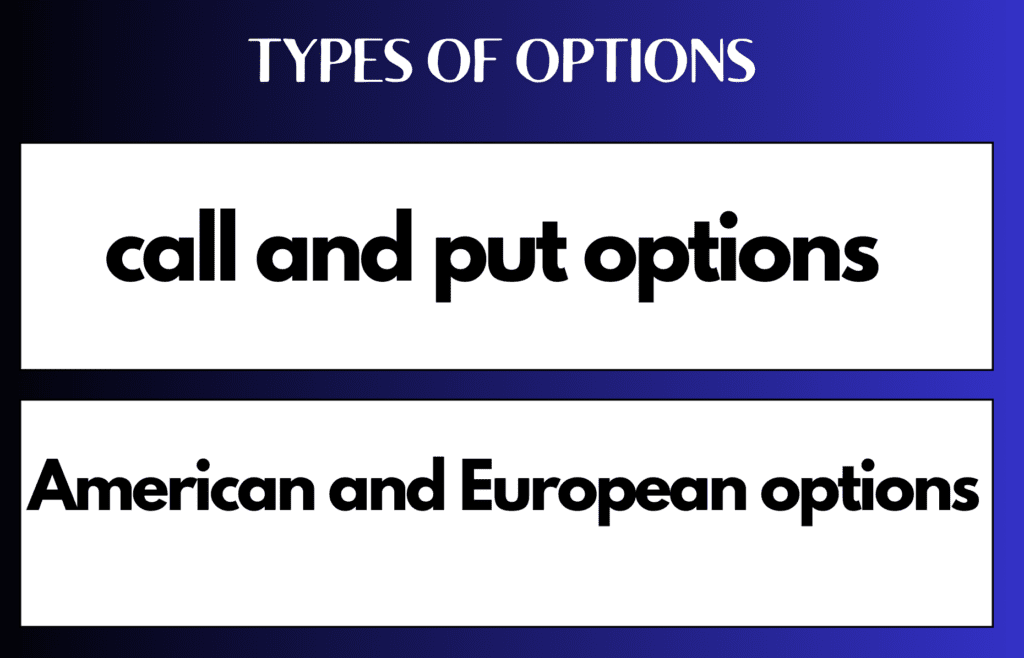
Digital currencies are reshaping the financial landscape, serving both as investment assets and mediums of exchange. Among the rapidly evolving products in this space, crypto derivatives stand out. As the crypto market expands, so does the range of products within the cryptocurrency realm. This comprehensive guide delves into the basics of crypto derivatives, covering types, trading strategies, tips, and their advantages and disadvantages.
Types of Derivatives in Crypto

What are Derivatives?
In essence, a derivative is a financial product or contract whose value is linked to an underlying asset. While traditional financial markets derive value from stocks, bonds, commodities, fiat currencies, and cryptocurrencies, crypto derivatives operate similarly.
Crypto Derivative Types:
The three main types of crypto derivatives are futures, options, and perpetual contracts.
Crypto Futures
Definition:
Futures involve an agreement between a buyer and a seller to sell an asset at a future date, with predetermined terms.
Usage:
Institutional investors commonly use futures to predict future price movements and market sentiment.
Example:
If the current Bitcoin price is $40,000, an investor can buy or sell futures contracts anticipating a price increase or decrease.
How to Trade:
Traders select the contract’s duration (weekly, bi-weekly, quarterly) and bet on price movements (long or short).
Crypto Options

Definition:
Options give traders the right to buy or sell a specific commodity at a set price on a future date.
Varieties:
Call options allow purchasing an asset, while put options allow selling. American options can be sold before expiry, while European options must be sold on the agreed date.
Costs:
Traders pay fees to buy an options contract, in addition to the asset’s actual price.
Trading Bitcoin Options:
Calls allow buying Bitcoin at an agreed price on contract expiry, while puts allow selling. Traders navigate price fluctuations to profit.
Perpetual Contracts
Definition:
Perpetual contracts, also called perpetual futures or perpetual swaps, are crypto derivatives without expiry dates.
Characteristics:
Positions can be held indefinitely, provided traders pay holding fees (funding rate) and maintain a minimum margin.
Usage:
Popular among day traders, perpetual contracts are comparable to Contracts for Difference (CFDs) in traditional finance.
Trading Mechanism:
Positive and negative funding rates incentivize traders to close or open positions, maintaining price alignment.
Why Crypto Derivatives Matter
1. Increasing Liquidity:
Derivatives enhance market liquidity by facilitating easy transactions, attracting more participants, lowering transaction costs, and minimizing slippage.
2. Mitigating Risks:
Derivatives act as risk management tools, protecting portfolios from unexpected market volatility. They attract professional traders and institutional investors by mitigating tail-risk events.
3. Portfolio Diversification:
Crypto derivatives enable diverse investment portfolios, spanning multiple assets. Traders can employ advanced strategies like arbitrage, pairs trading, and short-selling.
4. Optimized Price Discovery:
By allowing investors to go long or short, derivatives optimize price discovery, making market adjustments smoother and averting adverse price shocks.
How Crypto Derivatives Work
Purpose of Derivatives Trading:
Derivatives serve two main purposes—hedging and speculation.
Hedging Definition:
Hedging involves opening positions with negative correlations to existing ones to protect portfolios and mitigate losses.
Example:
Using futures to hedge a $100,000 portfolio by opening a short position with a 10x contract costing $10,000.
Speculation Definition:
Derivatives are used to speculate on future price movements, allowing traders to profit regardless of market direction.
Example:
Utilizing futures contracts to profit from market downturns (going short) during a bear market.
Leverage:
Derivatives enable leverage, letting investors amplify profits with a fraction of the upfront investment. Bybit, for instance, offers leverage up to 125 times the initial margin.
Features of Derivative Trading Exchanges
1. Stop-Loss and Take Profit:
Set floor and ceiling prices to automatically exit the market under favorable conditions.
2. Partial Close Orders:
Take partial gains by partially closing orders while benefiting from market growth.
3. Auto Deleveraging (ADL):
Deleverage opposing positions if they can’t be liquidated at a better price, preventing losses.
4. Insurance Funds:
Preserve funds from Auto Deleveraging by supporting traders falling below maintenance level.
Advantages of Using Derivatives
1. Market Efficiency:
Derivative trading enhances market efficiency by arbitrage, ensuring accurate prices and market stability.
2. Low Transaction Costs:
Effective risk management reduces transaction costs, making derivative trading more cost-effective than spot trading.
3. Risk Management:
Derivatives mitigate risks associated with fluctuating prices, allowing traders to offset losses with gains.
4. Determining Asset Prices:
Derivatives play a crucial role in defining underlying asset prices, contributing to the cryptocurrency economy.
5. Higher Leverage:
Derivatives enable higher leverage, magnifying small price movements for significant returns.
6. High Liquidity:
Crypto derivatives markets, with daily volumes reaching $600 billion in 2020, remain highly liquid, attracting institutional investors and traders.
7. Diversification:
Derivatives help investors minimize portfolio risks and generate signals for investment decisions and trading strategies.
Disadvantages of Using Derivatives
1. Higher Risk:
Derivatives can be volatile, subjecting traders to losses, especially in leveraged contracts.
2. Regulatory Concerns:
Derivatives trading legality varies globally, posing regulatory challenges in certain regions.
3. Lack of Due Diligence:
Over-the-counter transactions lack strict compliance procedures, leading to counterparty risks.
Trading Crypto Derivatives Efficiently
1. Choose the Right Derivative:
Align derivative choice with market trends; options for bullish markets, futures for bearish markets, and perpetual contracts for uncertain conditions.
2. Hedge Responsibly:
Avoid hedging more than acceptable losses. Carefully consider borrowing assets and selling them as a hedge strategy.
3. Select a Reliable Platform:
Choose established platforms with verified users, high trade volumes, and robust safety measures to detect fraud.
Conclusion:
Crypto derivatives trading suits both beginners and seasoned investors. Stay informed with the latest news and guides to navigate the dynamic world of crypto derivatives efficiently. Whether you’re interested in futures, options, or perpetual contracts, understanding the nuances and risks is key to success in this burgeoning market.
Unlock More Opportunities with HyroTrader
Ready to take your crypto trading journey to the next level? HyroTrader, as the first crypto prop firm, offers funding for crypto traders on Binance and ByBit. With a focus on being an FTMO alternative for real crypto traders, HyroTrader provides funded accounts and personalized support to help you succeed. Join us today and explore a new realm of possibilities in the crypto market.